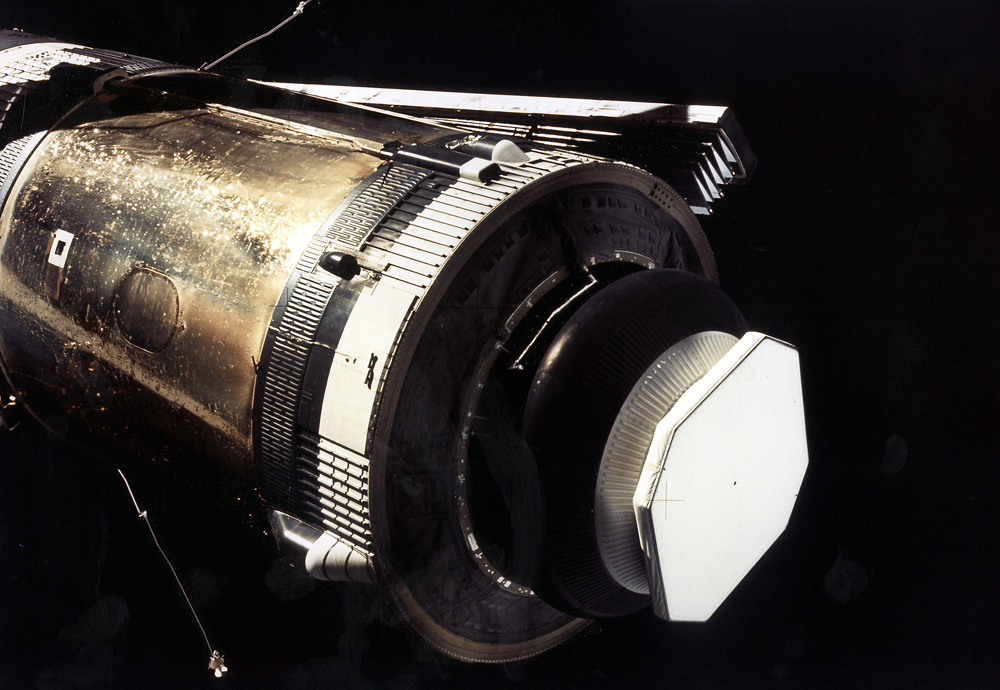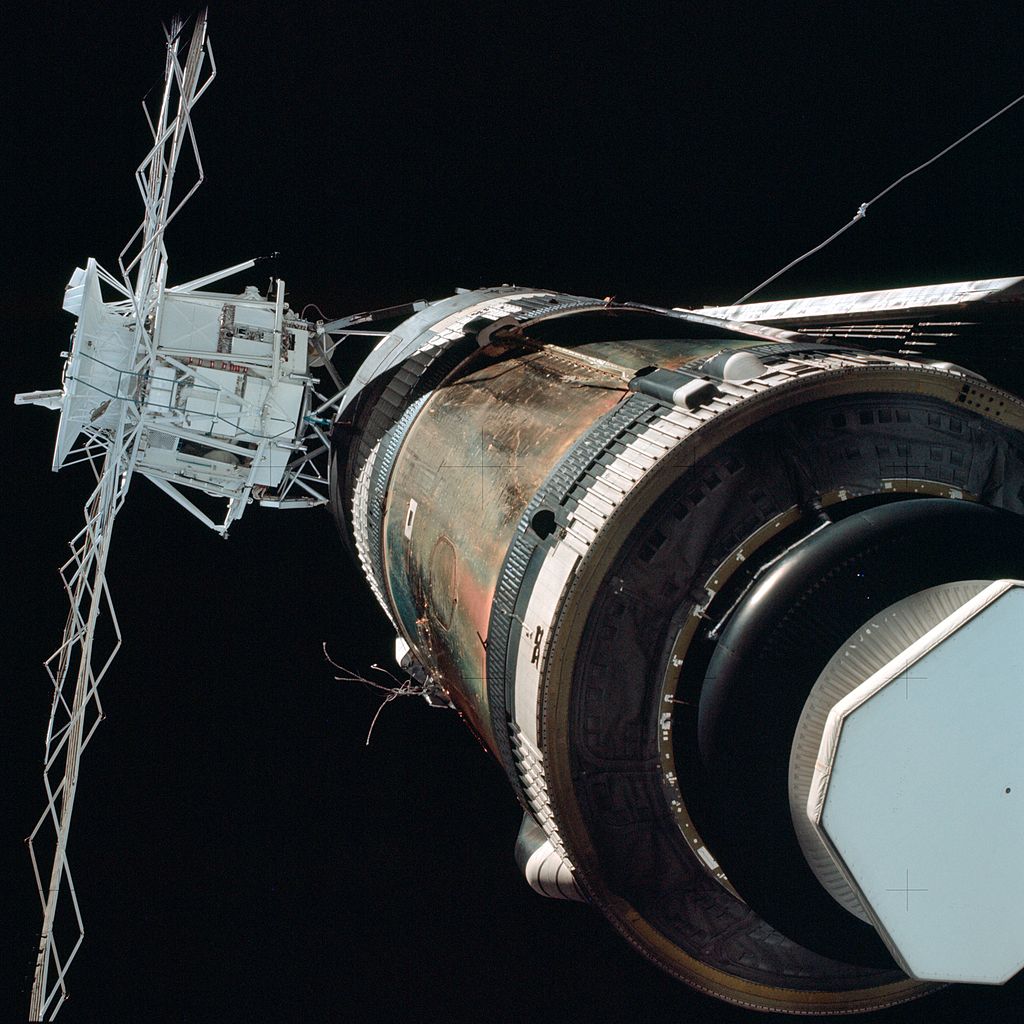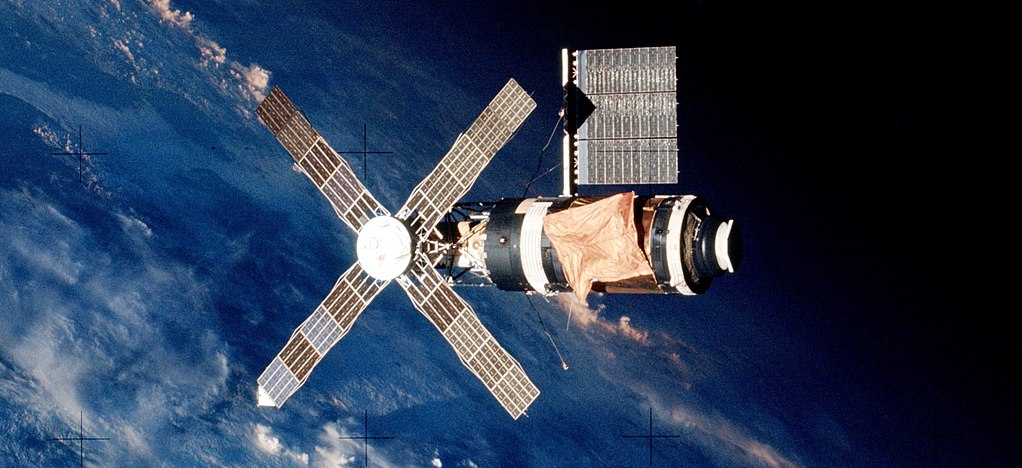When the United States first space station, Skylab, was launched on May 14th, 1973, it suffered major damage – the micro meteoroid shield intended to protect the station from space debris and the heat of the Sun was torn off, causing temperatures in the station to rise far beyond what the vehicle was designed for.
As the shield was torn away, it caused partial deployment of the stations 2 main solar arrays, while also entangling them in debris. When the station finally, amazingly, made it to orbit, rocket motors in the S-II upper stage which pushed the now expended stage away from the space station had the unfortunate side effect of actually tearing off one of the damaged solar arrays, further crippling the station.

REF: SL2-4-262_(MIX FILE)
Skylab-2 Onboard Photo: A Crippled Skylab In Orbit. Crew Found Their Home In Space To Be In Seroius Shape, Heat Shield Gone, One Solar Wing Gone, And The Other Jammed
Telemetry readouts from the station quickly showed ground control the effects of this damage. While at the time no one could see the state of the station, high temperature readings combined with the station trickling power quickly painted a grim picture. The temperatures were so high, in fact, the pressure hull of the vehicle was at danger of failing, effectively destroying the station.
The May 15th launch of the Skylab 2 mission and its crew was delayed for 10 days while it was determined what could be done, if anything, to save the station. In a few days of virtually nonstop work, engineers did indeed come up with some solutions that were worth trying, but it would take time to get these fixes produced, tested, and loaded into the Apollo Command Module that would carry the Skylab 2 crew to the station.
For now, Skylab had to be kept alive, with minimal electrical power and no real protection from the Suns heat.

A crippled space station…
The problem was this: The station needed electrical power from the solar arrays. Those, of course, needed to be pointed towards the Sun, and even then, the station was running on minimal power, but it was enough to keep basic systems functional.
Keeping the station pointed towards the Sun, however, caused internal temperatures to rise far beyond levels that were safe for the equipment and supplies stored onboard. Of course, the station could have its orientation changed so it wasn’t directly facing the sun, which did have an effect of cooling the station at the cost of electrical power.
It was a balancing act – you have to point to the Sun to get power, but that heats up the station, so you have to aim away from the Sun to cool down, but that means you lose electrical power and put stress on the batteries, so you have to point back towards the sun… and on and on it went.

Newspaper depiction of the damaged station.
It was quite the complex act, in actuality, as when the stations orientation was changed, some of the telemetry data was lost. Temperature and power data were still coming down to mission control – EECOM (Electrical, Environmental and COMmunication systems) would receive this data, and could infer the orientation of the station based on these numbers.
This meant constantly monitoring every aspect of the station in real time, and making adjustments based on what the data was saying. Skylab, being unmanned, was generally flown by those people “in the trench” but In this rare case, the engineering guys were flying the station themselves, based on the data as they saw it! Never before had this happened in United States spaceflight, but it was necessary to keep the station alive. EECOM was flying Skylab, based on inferences made on raw data. The Mission Control team had never trained for such a scenario, and many were doubtful, but it worked.
Eventually, a standard plan was established to keep the station both cool, and powered. It had worked – Skylab was alive, and soon the Skylab 2 crew would be launching to the Station on the most ambitious repair in human history.
More on that later.
45 Years Ago: The Launch of SkyLab
How The Skylab 63 Second Anomaly Crippled A Space Station

